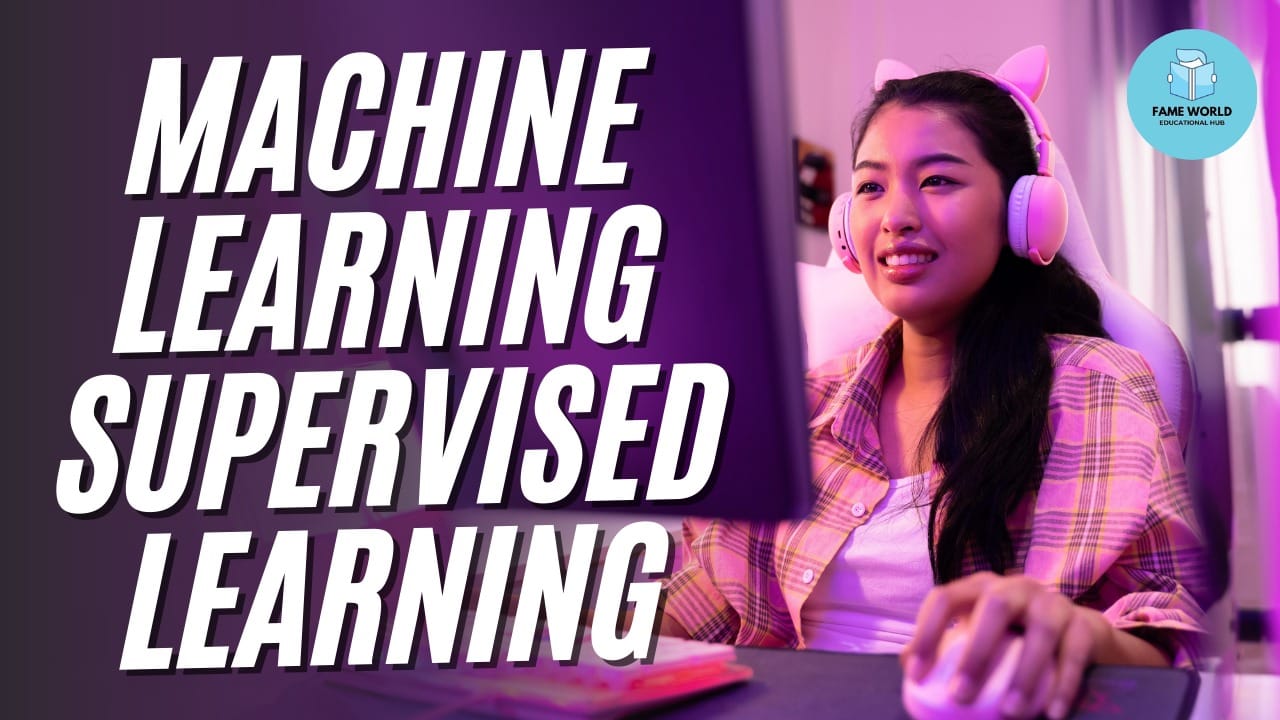Machine learning has revolutionized the way we approach complex tasks. From image recognition to self-driving cars, machine learning is behind some of the most innovative advancements today. One of the core methods in machine learning is supervised learning, which plays a fundamental role in solving classification and regression problems. In this interactive guide, we’ll explore what supervised learning is, how it works, its real-world applications, and step-by-step instructions for building a supervised learning model using Python.
Table of Contents
1. What is Supervised Learning?
2. How Supervised Learning Works
3. Types of Supervised Learning Algorithms
– Classification
– Regression
4. Real-World Applications of Supervised Learning
5. Step-by-Step Guide: Building a Supervised Learning Model in Python
6. Challenges and Limitations of Supervised Learning
7. Interactive Quiz: Test Your Knowledge
8. Conclusion
1. What is Supervised Learning?
Supervised learning is a type of machine learning in which a model is trained on labeled data. The term “labeled” means that each training example is paired with the correct output. The goal is for the model to learn a mapping from input features to the correct output (label).
For example, in a spam detection system, the input would be an email, and the output (label) would be “spam” or “not spam.” The model learns to classify emails based on a set of predefined examples where the correct classifications are already known.
2. How Supervised Learning Works
Supervised learning works in two main phases:
1. Training Phase:
– The algorithm is trained on a dataset where both the input features (e.g., text of an email) and the corresponding labels (e.g., spam or not spam) are known.
– The algorithm learns patterns and relationships between the input data and the output labels.
2. Prediction Phase:
– Once trained, the model can predict labels for new, unseen data.
– The accuracy of the model is evaluated by comparing its predictions against known labels in a test dataset.
Visual Example:
Imagine teaching a child to recognize fruits. You show them an apple and tell them, “This is an apple,” and do the same with other fruits. Eventually, the child learns to identify apples from other fruits based on patterns like color, shape, and texture.
3. Types of Supervised Learning Algorithms
Supervised learning can be divided into two main types:
A. Classification
In classification problems, the goal is to predict a discrete label from a set of categories.
Examples:
– Email Spam Detection: Classifying an email as “spam” or “not spam.”
– Disease Diagnosis: Predicting whether a patient has a specific disease based on medical records.
Popular classification algorithms include:
– Decision Trees
– K-Nearest Neighbors (KNN)
– Support Vector Machines (SVM)
– Logistic Regression
– Random Forest
B. Regression
In regression problems, the goal is to predict a continuous output, such as a number.
Examples:
– House Price Prediction: Predicting the price of a house based on features like size, location, and number of bedrooms.
– Stock Price Forecasting: Predicting future stock prices based on historical data.
Popular regression algorithms include:
– Linear Regression
– Ridge Regression
– Lasso Regression
– Polynomial Regression
4. Real-World Applications of Supervised Learning
Supervised learning is applied in a wide variety of industries:
– Healthcare: Predicting diseases and medical outcomes based on patient data.
– Finance: Credit scoring and fraud detection.
– Marketing: Customer segmentation and personalized product recommendations.
– Agriculture: Crop yield prediction and disease detection.
– Self-Driving Cars: Identifying objects on the road and making decisions based on that data.
5. Step-by-Step Guide: Building a Supervised Learning Model in Python
Let’s walk through building a simple supervised learning model using Python’s `scikit-learn` library. We’ll use a classification problem—predicting whether a person has diabetes based on a dataset.
Step 1: Install Required Libraries
Make sure you have Python and the required libraries installed. You can install them using:
“`bash
pip install numpy pandas scikit-learn matplotlib
“`
Step 2: Import the Libraries
“`python
import numpy as np
import pandas as pd
from sklearn.model_selection import train_test_split
from sklearn.ensemble import RandomForestClassifier
from sklearn.metrics import accuracy_score
import matplotlib.pyplot as plt
“`
Step 3: Load and Explore the Dataset
We’ll use the popular Pima Indians Diabetes Dataset available through `scikit-learn`.
“`python
Load the dataset
url = “https://raw.githubusercontent.com/jbrownlee/Datasets/master/pima-indians-diabetes.data.csv”
column_names = [‘Pregnancies’, ‘Glucose’, ‘BloodPressure’, ‘SkinThickness’, ‘Insulin’, ‘BMI’, ‘DiabetesPedigree’, ‘Age’, ‘Outcome’]
data = pd.read_csv(url, names=column_names)
Explore the data
print(data.head())
“`
Step 4: Preprocessing the Data
“`python
Split the data into features (X) and labels (y)
X = data.iloc[:, :-1] Features
y = data.iloc[:, -1] Labels
Split the data into training and testing sets
X_train, X_test, y_train, y_test = train_test_split(X, y, test_size=0.3, random_state=42)
“`
Step 5: Train the Model
“`python
Initialize the model
model = RandomForestClassifier()
Train the model
model.fit(X_train, y_train)
“`
Step 6: Make Predictions and Evaluate the Model
“`python
Make predictions
y_pred = model.predict(X_test)
Evaluate the accuracy
accuracy = accuracy_score(y_test, y_pred)
print(f”Model Accuracy: {accuracy * 100:.2f}%”)
“`
Step 7: Visualize Feature Importance
“`python
Plot feature importance
importances = model.feature_importances_
indices = np.argsort(importances)[::-1]
plt.figure()
plt.title(“Feature Importances”)
plt.bar(range(X.shape[1]), importances[indices], align=”center”)
plt.xticks(range(X.shape[1]), X.columns[indices], rotation=90)
plt.show()
“`
6. Challenges and Limitations of Supervised Learning
While supervised learning is powerful, it has some limitations:
– Data Dependency: It requires large amounts of labeled data, which can be expensive and time-consuming to gather.
– Overfitting: Models may perform well on training data but fail to generalize to unseen data.
– Bias: The model’s performance is highly dependent on the quality and diversity of the training data.
7. Interactive Quiz: Test Your Knowledge
Ready to test your knowledge? Try answering the following questions:
1. What is the main difference between classification and regression in supervised learning?
2. Name two common real-world applications of supervised learning.
3. What does overfitting mean in the context of machine learning?
8. Conclusion
Supervised learning is a cornerstone of machine learning, enabling computers to perform tasks like image recognition, disease diagnosis, and personalized recommendations. With a solid understanding of how it works, you can apply this knowledge to build powerful models in your projects.



